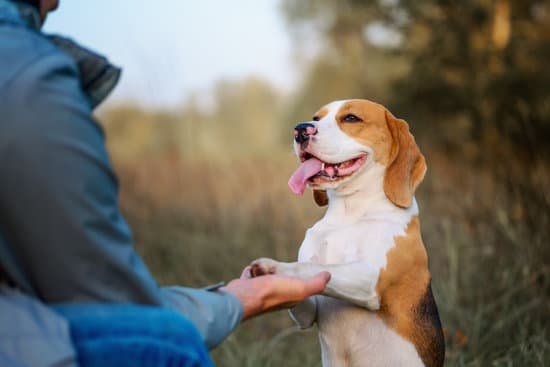Obedience trials are a popular dog sport where canine competitors showcase their training, discipline, and skills in performing a series of obedience exercises. In these trials, dogs are judged based on their ability to follow commands accurately and with precision. For those looking to participate in this challenging yet rewarding activity, understanding the ins and outs of obedience trials is crucial.
Training a dog for obedience trials involves more than just teaching basic commands; it requires establishing a strong bond of trust between the handler and the dog. This foundation is essential for effective communication and cooperation during training sessions and ultimately in the competition ring. Without this solid relationship, it can be challenging for the dog to perform at their best potential.
Furthermore, participating in obedience trials not only provides an opportunity for dogs to showcase their skills but also serves as a platform for owners to bond with their furry companions. The experience of working together towards a common goal can strengthen the relationship between handler and dog, creating a deeper connection built on mutual respect and trust. In essence, obedience trials are not just about winning competitions but also about fostering a strong partnership with your canine companion.
Choosing the Right Dog for Obedience Trials
When it comes to training a dog for obedience trials, one of the crucial factors to consider is choosing the right breed with the appropriate temperament. Different dog breeds have varying natural tendencies and energy levels, which can play a significant role in their success in obedience trials. For example, some breeds are known for their high intelligence and eagerness to please, making them ideal candidates for obedience training.
Understanding Breed Considerations
Certain breeds such as Border Collies, German Shepherds, Golden Retrievers, and Poodles are often favored for obedience trials due to their intelligence, trainability, and focus. These breeds typically excel in learning new commands quickly and performing tasks with precision. On the other hand, breeds that were originally bred for independent work or guarding may require more patience and specialized training techniques.
Evaluating Temperament
In addition to considering breed characteristics, it’s essential to evaluate the individual temperament of each dog when training for obedience trials. Some dogs may naturally be more outgoing and social, while others might be more reserved or easily distracted.
Understanding your dog’s personality can help tailor your training approach to suit their needs and maximize their potential in obedience competitions. It’s important to remember that every dog is unique, so being patient and adaptable in your training methods is key to success.
By carefully selecting a breed with the right attributes and understanding your dog’s temperament, you can set a solid foundation for training them for obedience trials effectively. With dedication, proper guidance, and consistent practice, any dog has the potential to excel in obedience competitions and showcase their skills through teamwork with their handler.
Training a dog for obedience trials is not just about teaching commands but also about building a strong bond based on trust and communication that will ultimately lead to successful performances in competition settings.
Establishing Trust and Bond With Your Dog
Establishing a strong bond and trust with your dog is crucial in preparing them for obedience trials. Dogs are pack animals by nature and thrive on the relationship they have with their owners. Building a foundation of trust through positive interactions, consistent training, and clear communication is key to successful obedience training. By establishing a strong bond with your dog, you create a solid partnership that will enhance their performance in obedience trials.
Building Trust Through Consistent Training
Consistency is key when it comes to building trust with your dog. Establishing routines and practicing obedience commands regularly will help strengthen the bond between you and your canine companion. Consistent training sessions not only improve your dog’s skills but also deepen the connection you have with them. By being patient, persistent, and offering positive reinforcement during training sessions, you show your dog that you are a reliable leader they can trust.
Communication and Understanding Your Dog
Communication plays a vital role in building trust with your dog. Understanding their body language, vocal cues, and signals will help improve the clarity of your commands during training. Being attuned to your dog’s needs and emotions allows you to tailor your training approach to suit their individual personality and learning style. By listening to your dog’s feedback and responding appropriately, you demonstrate respect for their boundaries and foster a trusting relationship based on mutual understanding.
Incorporating bonding activities such as playtime, grooming sessions, or leisure walks into your daily routine can also strengthen the connection between you and your furry friend. Spending quality time together outside of obedience training helps reinforce the bond you share with your dog and promotes a positive association with learning new skills. Ultimately, establishing trust through consistent training, effective communication, and shared experiences will set the groundwork for success when competing in obedience trials.
Basic Obedience Commands
Training your dog for obedience trials involves mastering a set of basic obedience commands that form the foundation for more advanced training. These commands are essential for your dog to demonstrate control, attentiveness, and discipline during competitions. Here are some key points to consider when teaching your dog the basic obedience commands:
- Sit: Teaching your dog to sit on command is usually one of the first commands you’ll work on. Start by holding a treat close to your dog’s nose and then raise it slowly above their head. This action should naturally make your dog sit down as they try to look up at the treat. Once they are in a sitting position, reward them with the treat and praise.
- Stay: The “stay” command is crucial for keeping your dog in place until released. Begin by asking your dog to sit, then give the command “stay” while making eye contact with them. Start by taking one step back, return immediately, and reward your dog for staying put. Gradually increase the distance and duration of the stay as they improve.
- Heel: Heeling means walking next to you without pulling or wandering off. Use a leash connected to a collar or harness and keep treats handy when practicing this command. Start walking while saying “heel,” gently guiding your dog back into position if they stray. Reward them frequently for maintaining the correct heeling position.
Mastering these basic obedience commands sets a strong foundation for more complex behaviors needed in obedience trials. Remember that patience, consistency, and positive reinforcement play vital roles in how effectively your dog learns these commands.
Incorporate regular practice sessions into your daily routine to reinforce these behaviors consistently over time. With dedication and proper training techniques, you can prepare your canine companion for success in obedience trials and build a stronger bond based on trust and communication.
Advanced Obedience Commands
Once your dog has mastered the basic obedience commands like sit, stay, heel, and come, it’s time to move on to more advanced commands that can be crucial in obedience trials. The commands of drop, leave it, and place are essential for demonstrating your dog’s discipline and responsiveness. Here’s how you can effectively train your dog in these advanced obedience commands:
- Drop: Teaching your dog to drop or lie down on command can be useful for situations where you need them to immediately stop what they are doing and lay low. Start by having your dog sit or stand in front of you, then use a treat to lure them into a down position while saying the command “drop” or “down”. Reward them when they successfully follow through and repeat the exercise regularly.
- Leave It: This command is essential for preventing your dog from picking up or interacting with items they shouldn’t have. Begin by showing your dog a treat in one hand while saying “leave it” firmly. Close your hand if they try to grab it and give them a different treat as a reward. Gradually make the exercise more challenging by using objects instead of treats.
- Place: Training your dog to go to a specific spot or mat when given the “place” command can be helpful during obedience trials where they must stay in one spot. Lead your dog to the designated spot with a leash or guiding them with treats, then say “place” while encouraging them to settle there. Reward them for staying put and practice this command in various environments.
By consistently practicing these advanced obedience commands with patience and positive reinforcement, your dog will become more responsive and reliable during obedience trials. Remember that each dog learns at their own pace, so be patient and celebrate small victories along the way.
Training Equipment
When it comes to training a dog for obedience trials, having the right training equipment is essential. Collars and leashes are not only used for control during training sessions but also play a crucial role in reinforcing certain behaviors. For obedience trials, it’s important to choose a collar that is comfortable for your dog but also provides adequate control. Martingale collars or slip collars are commonly used for obedience training as they give gentle feedback without harming the dog.
Another important tool in obedience training is the clicker. Clicker training is a popular method that involves using a clicking sound to mark desired behavior followed by a treat or reward. This positive reinforcement technique helps dogs learn new commands quickly and effectively. Clickers can be especially useful for teaching more complex behaviors required in advanced obedience trials.
Treats are a powerful motivator when training dogs for obedience trials. High-value treats such as small pieces of cooked chicken or cheese can be used to reward your dog for successfully following a command. It’s essential to use treats that are both enticing and easy to consume quickly during training sessions. By incorporating treats into your training routine, you can keep your dog engaged and excited about learning new behaviors for obedience trials.
| Training Equipment | Importance |
|---|---|
| Collars and Leashes | Provide control and reinforce behaviors |
| Clickers | Facilitate quick learning of new commands through positive reinforcement |
| Treats | Motivate dogs by rewarding desired behavior during training |
Training Techniques
Positive reinforcement, clicker training, and consistency are three essential techniques to effectively train a dog for obedience trials. Positive reinforcement involves rewarding your dog with treats, praise, or toys when they exhibit the desired behavior. This method reinforces good behavior and motivates the dog to continue performing it.
Clicker training is a form of positive reinforcement that uses a clicker device to mark the desired behavior followed by a reward. Consistency in training is crucial as it helps the dog understand what is expected of them and allows for smoother learning.
When implementing positive reinforcement in training your dog for obedience trials, it is important to use high-value treats that your dog finds particularly enticing. This will make them more eager to follow your commands and work towards earning the rewards. Additionally, timing is key in positive reinforcement – the reward must be given immediately after the desired behavior to reinforce the connection between the action and the reward.
Clicker training can be a valuable tool in teaching complex behaviors required for obedience trials, such as precise movements or position changes. The sound of the clicker serves as a clear marker for correct behavior, making it easier for your dog to understand what they are being rewarded for.
Consistency across all aspects of training, including commands, rewards, and expectations, will help your dog progress steadily in their training journey. By incorporating these techniques into your training regimen, you can effectively prepare your furry companion for success in obedience trials.
| Training Techniques | Overview |
|---|---|
| Positive Reinforcement | Rewarding desired behavior with treats or praise. |
| Clicker Training | Using a clicker device to mark correct behaviors followed by rewards. |
| Consistency | Maintaining uniformity in commands, rewards, and expectations during training. |
Preparing for Obedience Trials
As you and your furry companion progress in obedience training, it’s essential to start preparing for obedience trials. One effective way to get ready for the actual competition is by organizing mock trials. These simulated events mimic the atmosphere of a real trial, allowing both you and your dog to familiarize yourselves with the setting, routines, and expectations. It’s an excellent opportunity to practice obedience commands under pressure and identify areas that need improvement before the actual event.
Handling stress is another crucial aspect of preparing for obedience trials. Dogs are perceptive animals and can pick up on their handlers’ emotions. Therefore, it’s essential to remain calm and composed during training sessions and especially during mock trials. Practice deep breathing exercises or visualization techniques to manage any pre-competition jitters you may experience. Remember that your dog looks up to you for guidance, so projecting confidence will help them feel more secure and focused during the trial.
Building confidence in both yourself and your dog is key to success in obedience trials. Confidence comes from consistent training, clear communication, and positive reinforcement. Encourage your dog’s successes during practice sessions and celebrate small victories along the way.
By instilling a sense of accomplishment in your furry friend, you are boosting their self-assurance which will translate into improved performance during the actual competition. With trust in each other’s abilities and a solid foundation of training, you’ll be well-prepared to tackle obedience trials together successfully.
Participating in Obedience Trials
One important aspect of participating in obedience trials is familiarizing yourself with the specific rules set by the organization hosting the event. Each organization may have slight variations in the exercises required or allowed training methods. It is essential to review the rulebook thoroughly so that you are prepared for what to expect during the competition. Understanding these rules will not only help you avoid unnecessary penalties but also ensure a fair assessment of your dog’s skills.
Scoring in obedience trials usually involves a point system where judges assign points for each exercise based on criteria like accuracy, speed, attitude, and precision. Familiarize yourself with how scoring works so that you can track your progress throughout training and identify areas for improvement. Additionally, maintaining good sportsmanship and adhering to proper etiquette during competitions is vital.
This includes respecting other participants, handling your dog professionally, following instructions from judges promptly, and being gracious in both victory and defeat. By understanding the rules, scoring system, and etiquette of obedience trials, you can set yourself up for success while showcasing your dog’s talents effectively.
Troubleshooting Common Challenges
As you embark on the journey of training your dog for obedience trials, it is essential to be prepared for common challenges that may arise along the way. Distractions, fear, aggression, and lack of focus are all obstacles that can hinder your progress in achieving success in obedience trials. However, with the right strategies and techniques, these challenges can be overcome.
When faced with distractions during training sessions, it is crucial to gradually introduce them to your dog in a controlled environment. By desensitizing your dog to various distractions, such as noises or other animals, you can help them stay focused on following your commands. Additionally, using high-value treats or toys can help maintain your dog’s attention and motivation during training.
Fear and aggression are serious concerns that need to be addressed with patience and understanding. If your dog displays signs of fear or aggression during training, seek guidance from a professional trainer who specializes in behavior modification. It is important to create a safe and positive training environment for your dog to build trust and confidence. Through consistent training and positive reinforcement techniques, you can help your dog overcome their fears and develop more desirable behaviors.
Lastly, addressing issues related to lack of focus requires patience and perseverance. Building a strong bond with your dog based on trust and respect is key to improving their focus during training sessions. Incorporating interactive play sessions and mental stimulation activities can also help keep your dog engaged and mentally sharp. Remember that each dog is unique, so finding what motivates and engages your furry companion is essential in keeping them on track for success in obedience trials.
In conclusion, navigating through challenges like distractions, fear, aggression, and lack of focus while training for obedience trials requires dedication, consistency, and a deep understanding of your dog’s needs. By applying the proper techniques and seeking professional guidance when needed, you can effectively address these common challenges and set yourself up for success in both training sessions and actual trial competitions.
Remember that every step taken towards overcoming these obstacles strengthens the bond between you and your loyal companion as you work together towards achieving shared goals.
Frequently Asked Questions
What Are the 7 Commands to Train a Dog?
Training a dog involves several key commands that are essential for effective communication and behavior reinforcement. These commands typically include sit, stay, come, down, heel, no, and good. Consistent practice and positive reinforcement are crucial to successfully train a dog using these commands.
How Long Does It Take for a Dog to Learn Obedience?
The time it takes for a dog to learn obedience can vary depending on factors such as the dog’s age, breed, temperament, and previous training experience. Generally, it can take several weeks to several months of consistent training to see significant progress in a dog’s obedience skills.
Patience, consistency, and positive reinforcement are key elements in the training process.
What Does an Obedience Trial Look Like?
An obedience trial is a structured competition where dogs demonstrate their proficiency in various obedience exercises. These exercises often include heeling on and off-leash, coming when called, staying in different positions for specified durations, retrieving objects, and more.
Dogs are judged based on their accuracy and performance in executing each exercise with precision and attentiveness. Obedience trials provide an opportunity for dogs and handlers to showcase their training accomplishments while receiving feedback from trained judges.

Welcome to the blog! I am a professional dog trainer and have been working with dogs for many years. In this blog, I will be discussing various topics related to dog training, including tips, tricks, and advice. I hope you find this information helpful and informative. Thanks for reading!





